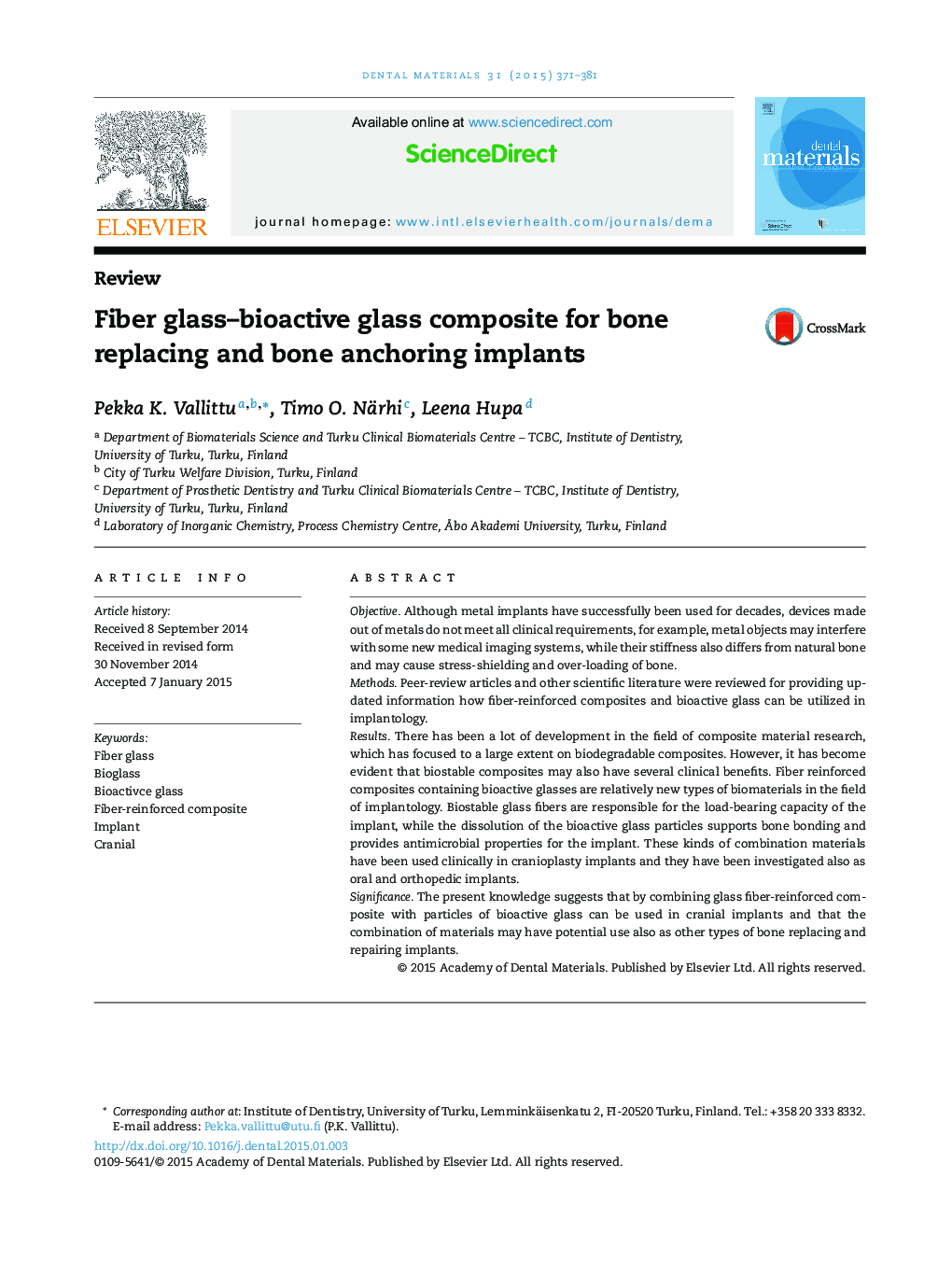| Article ID | Journal | Published Year | Pages | File Type |
|---|---|---|---|---|
| 1420571 | Dental Materials | 2015 | 11 Pages |
ObjectiveAlthough metal implants have successfully been used for decades, devices made out of metals do not meet all clinical requirements, for example, metal objects may interfere with some new medical imaging systems, while their stiffness also differs from natural bone and may cause stress-shielding and over-loading of bone.MethodsPeer-review articles and other scientific literature were reviewed for providing up-dated information how fiber-reinforced composites and bioactive glass can be utilized in implantology.ResultsThere has been a lot of development in the field of composite material research, which has focused to a large extent on biodegradable composites. However, it has become evident that biostable composites may also have several clinical benefits. Fiber reinforced composites containing bioactive glasses are relatively new types of biomaterials in the field of implantology. Biostable glass fibers are responsible for the load-bearing capacity of the implant, while the dissolution of the bioactive glass particles supports bone bonding and provides antimicrobial properties for the implant. These kinds of combination materials have been used clinically in cranioplasty implants and they have been investigated also as oral and orthopedic implants.SignificanceThe present knowledge suggests that by combining glass fiber-reinforced composite with particles of bioactive glass can be used in cranial implants and that the combination of materials may have potential use also as other types of bone replacing and repairing implants.
